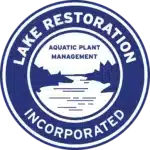Backyard Pond Care and Management – The Essentials
Backyard ponds can be a great source of beauty and enjoyment for many homeowners. Having a pond in your backyard often adds a feeling of tranquility to your property. However, ponds can quickly fall into poor health and degradation if not maintained. Proper backyard pond care and management requires a commitment from a well-informed pond owner. There are many pond weed control kits that can help keep your pond healthy and looking great.
It is a very good idea to become familiar with the plants growing in your backyard pond. This will allow you to determine when a species has become overabundant. A general rule of thumb is that if a plant is interfering with a common use of the pond (swimming, fishing, scenic beauty, etc) then there is a problem that needs to be addressed with proper pond management.
Excess Nutrients
A typical cause of excess plant growth is an excess of nutrients in the water. These nutrients get there from lawn clippings, fertilizers, and other organic debris that makes its way into the pond. Nitrogen and phosphorus are usually the culprits. These two nutrients are known to cause algae blooms and unwanted plant growth when they are present in excess quantities. PhosControl is a great product for reducing the levels of phosphorus in your backyard pond. Sources of the nutrients should also be considered and addressed, if possible. If you’d like to learn about the specific nutrient levels of your pond, Lake Restoration offers a Pond Water Analysis program where you can mail in a water sample and we will analyze your pond’s water quality. After reviewing the result, we provide recommendations for proper backyard pond care and management.
Free-Floating Plants
Floating weeds like duckweed and watermeal often infest ponds where there is little water movement. These surface covering plants are generally considered to be the largest detrimental factor in a pond’s beauty. When the surface of your pond’s water is completely covered, many other problems will arise due to oxygen depletion and photosynthesis interference. If you begin to see a free-floating surface plant infestation in your pond, we strongly recommend that you take action before the entire pond gets taken over. The most effective solution for plants of this kind is to use the herbicide Fluridone that stays suspended in the water for extended periods of time. This allows for complete control and management of unwanted nuisance plants. Fluridone is available in our PondRestore Ultra package.
Water Color
Another common backyard pond care problem for ponds is water discoloration. Water discoloration can result from decomposition of vegetable matter, tannin (a brownish compound that commonly leaches from forest trees), and algae blooms. A pond’s water color can often make or break the beauty and tranquility of a pond. Because of this, we recommend the use of pond dyes in cases where your pond’s color needs a little help.
Pond Algae
Pond algae, commonly referred to as “pond scum” and “pond moss,” is a common nuisance among ponds. Pond algaecontrol is not a very difficult task, but it requires an ongoing effort. Typically, an algaecide will need to be sprayed across the pond’s surface once every two weeks. We recommend the algaecide Mizzen™ because it is effective on almost all types of algae. Mizzen™ is also safe for most types of fish and wildlife, however we do not recommend the use of Mizzen™ if your backyard pond contains trout, catfish, or koi (these species of fish are particularly sensitive to copper, an ingredient in Mizzen™).
Cattails
Cattails are a common sight surrounding many backyard ponds. However, if your pond has cattails and you want to have direct access to the water then you’ll need to clear away a patch of the plants. The Open Water Kit is a great pond care and management product that can be sprayed onto the cattails and will thoroughly eradicate the plants, giving you the ability to clear away select portions of water access.
Pond Predators
It is very important to be aware of the Pond Predators that may have taken up residence in your pond.
Preparing your pond for winter
If you live in an area where outdoor water bodies freeze over during the winter, then there are some backyard pond winterization care and management steps you should take. Firstly, make sure your pond is clear of floating debris such as leaves and pine needles that will accumulate during the fall months. It is important to minimize the amount of decomposing matter in your pond because it will produce harmful gasses that become trapped under the ice. Your fish will do just fine as long as they have 2 or more feet of water underneath the ice. It is also a good idea to keep a hole in the ice so that a gas exchange can take place. The use of a black pond dye in your pond is also a good idea, as the black dye will block photosynthesis and slow the regeneration of pesky pond weeds in the coming spring.
